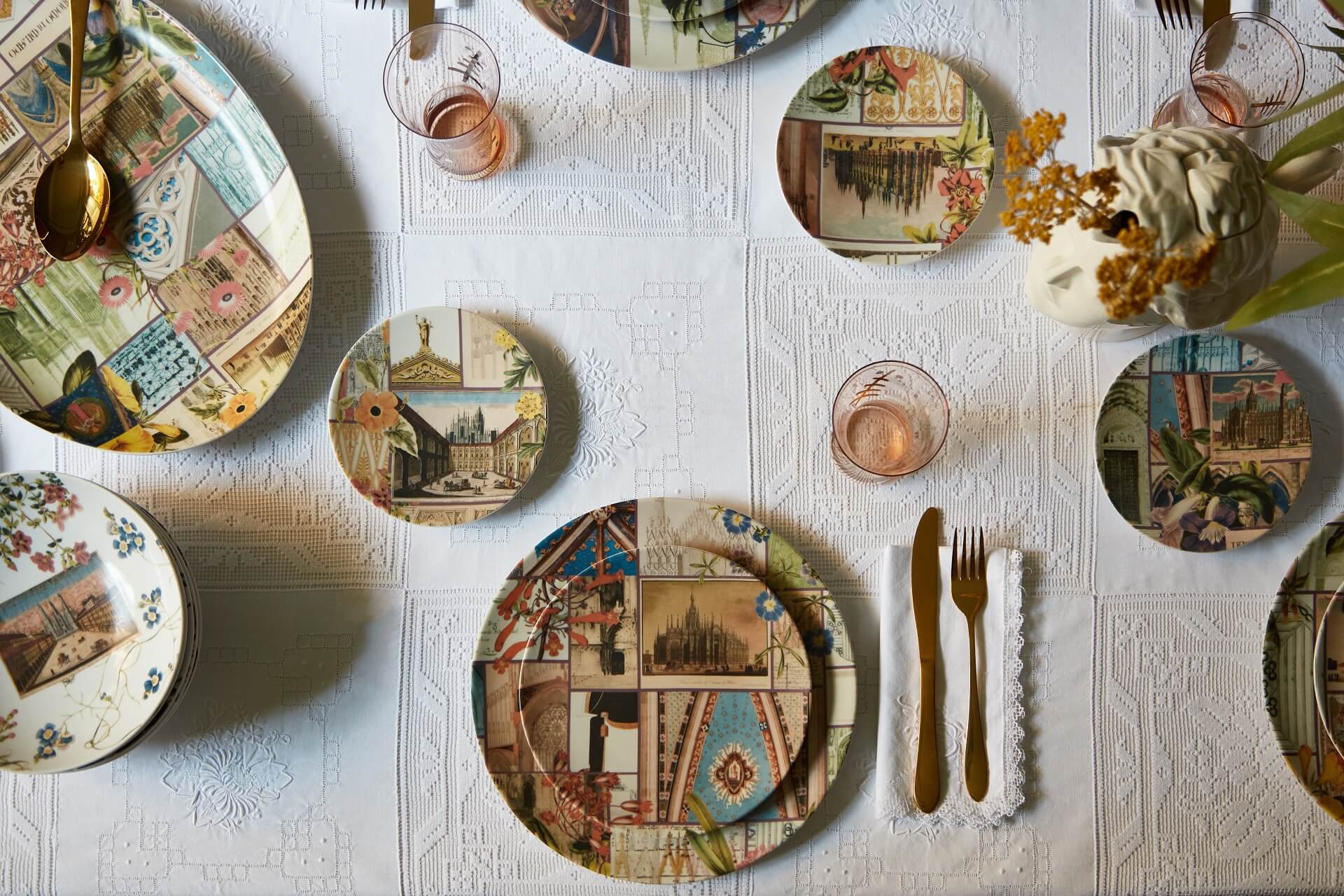Spazio Vito Nesta, the young designer’s new creative atelier dedicated to accessories, opens in Milan just a few steps from the Central Station, at Via Ferrante Aporti 16.
Inspired by the Story of the Duomo di Milano
Starting this month, three refined collections are on display: Le Volte Celesti, Il Duomo Che Non C’è and La Storia Infinita, decorated ceramics that take inspiration from drawings in the VFD archive to tell the beauty and history of Duomo di Milano and the city.
The Work of Vito Nesta
“The digitization of some of the drawings has enabled the creation of a series of products, demonstrating that the beauty that the archive holds is not just the preserve of scholars and researchers, but can be enjoyed by everyone in the most varied forms,” says Vito Nesta, surrounded by unique pieces in his new gallery.
“These are a series of very large designs submitted between 1886 and 1888 for the International Competition for the New Facade of the Duomo di Milano. Although none of these were chosen as the winner of the competition, they are true masterpieces done in India ink and watercolor, incredibly precise projects that bear witness to the various architectural styles and movements emerging in late 19th century Europe.”
Vito Nesta’s work was therefore to investigate and search for a common thread that would give back to the enormous documentation a second, contemporary and commonly used way of expression.
“The archives of the Veneranda Fabbrica del Duomo preserve not only evidence of the Duomo as we can still see it today, but also of how the monument could have been: this is the case with this series of plans made by architect Paolo Cesa Bianchi that show his idea of bringing the sky inside the Duomo, decorating the cathedral vaults with a blue background enriched with gold stars.”
These small drawings belong to a decidedly broad category of projects made by the architects of the Veneranda Fabbrica and their helpers, of which Vito Nesta collects some with the same purpose of visually explaining the content of the reports to which they were attached. These are small colorful sketches, often accompanied by notes and legends, which well-explain the frenetic work of the site during the 19th century.
“Through these simple strokes we can reconstruct the history of each piece of the Duomo down to the smallest detail: the names of the sculptors, the dimensions of the marble blocks are indicated, thus reminding us that the Archives is really the Diary of the Duomo.”










